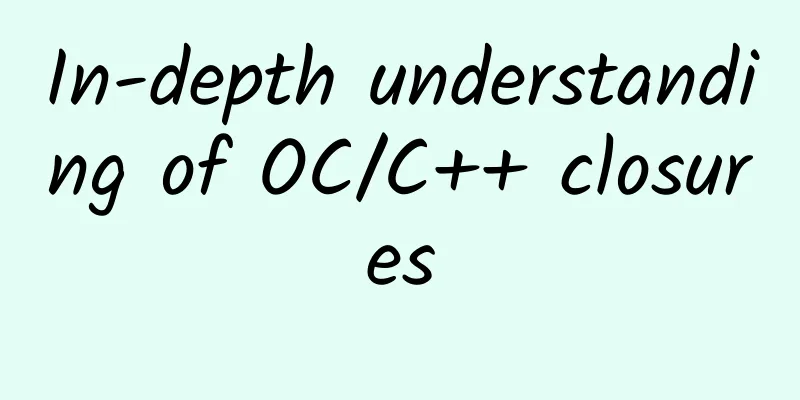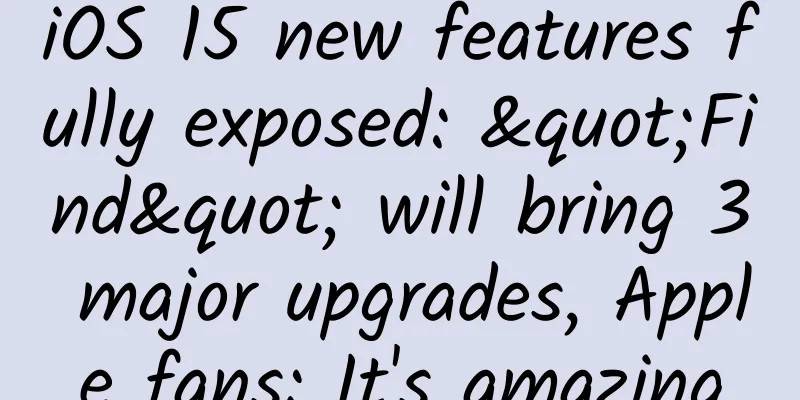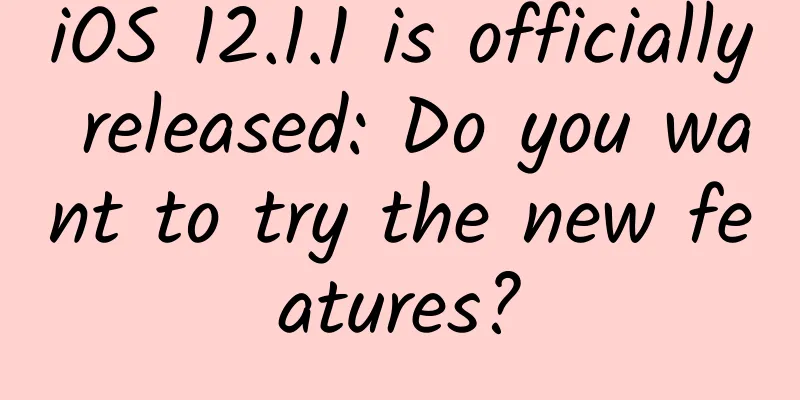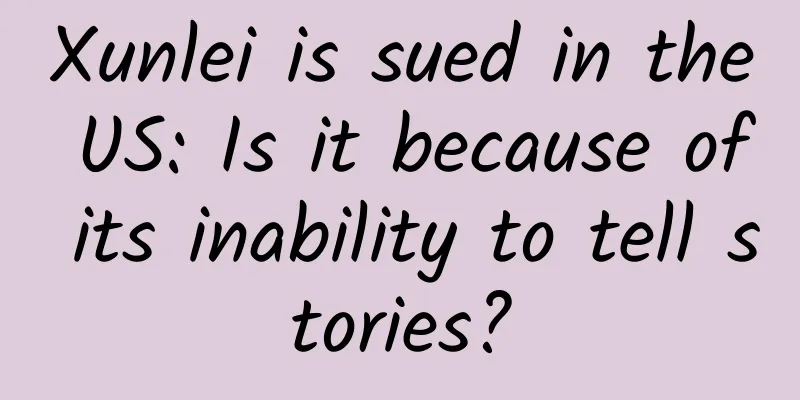The “4-word secret” for event operation planning!

|
In the actual work of operation planning, we may easily encounter a situation where we suddenly have some good ideas and think that they will definitely attract many users to participate. But in reality, after detailed thinking or writing the case, we find that it is difficult to succeed, or we simply have to wait until the event is underway to discover that there are major bugs, and users are completely uninterested in the event. In fact, at this time, we can learn from our colleagues in design positions. They have a "full-link" way of thinking at work, which may be able to solve your problem. The so-called "full-link thinking" is actually not a new term, but it is mainly popular among designers. If you are an operator or planner, you may be unfamiliar with this term. What is “full-link thinking”? Full-link thinking is actually a way of thinking, and is not just limited to designers. It can be divided into two types:
Simply put, full-link thinking means breaking away from your established position and having your own thoughts and feedback on every aspect of a project. A designer only produces works according to requirements and is a part of the project; a full-link designer will communicate across positions and verify the effectiveness of the work through subsequent data monitoring and analysis of the work delivery process, thereby promoting the completion of overall business goals. Similarly, it is far from enough for an operations planner to be only responsible for writing plans. Applying this cross-domain thinking to actual activity operation scenarios, such as common online projects, marketing interactions, special events, etc., becomes the following four method processes, which are also the results summarized by individuals after dozens of project planning: Disassembly - Purpose, User Motivation, Feasibility Purpose Why do we need to do activities? What is your purpose? What is the reason? Planning an event is like commanding an army to attack a city, but before the army sets out, everyone must know where the destination is. Is your goal to attract new customers and promote activation? Or increase the stickiness of old users? Or is it brand promotion? These are all things that need to be determined before an event begins. If the purpose is to attract new users and stimulate activation, then the focus is on external publicity and promotion. Promotion channels and fission methods are of paramount importance. If the purpose is to increase the stickiness of existing users, then efforts need to be made on user care and awakening dormant users. If it is brand promotion, then whether the content of the event is consistent with the brand tone of the product is the key point to consider when writing the event plan. In addition, the last and most important point in this step is to quantify the goals. User motivation Knowing what we want, we also need to know what users want. Only by knowing what users want can we develop accurate solutions for them. Is it intrinsic motivation or extrinsic motivation that motivates users to participate in activities? In motivation? Is it the need for respect, showing off, or self-actualization? Or do you need prizes, bonuses, or honors? These all require our detailed analysis. For a detailed analysis of this content, please refer to my previous article "Three Principles of Senior Event Operations: How to Increase Users' Willingness to Participate in Events? 》. Project feasibility Feasibility analysis not only appears in the product field, it is also indispensable in event planning. Every larger activity requires a feasibility analysis of the plan, and this step is also included in the first step of goal decomposition. Simply put, after analyzing the above content, you need to conduct a "virtual rehearsal" of the entire event, carefully analyzing the conditions for the implementation of the event, the movements of competitors at the same time, the risks that will be encountered and the solutions, and the most important thing next, the evaluation of resources. Comments – What resources do we have? What resources can we mobilize with our own authority and capabilities? If you don't have a clear understanding of what cards you have in your hand, then you can't even start the game. In event operations, we usually need three types of resources: money, channels, and people. For example, if you are an event operator in the real estate industry and need to conduct an online voting and selection activity for various brands of real estate companies, what resources can you mobilize?
What should I do if there are insufficient resources or insufficient permissions? Generally speaking, we have two solutions. Due to space limitations, it is not convenient to expand, in short:
Sohu Video and Douban Market launched the "Buy Sohu Membership and Get a Douban Calendar" event Determination - Plan A and Plan B After breaking down the goals and determining the resources, a plan must be output for communication with the departments and leaders involved in this activity. In general, the following parts need to be written down in this plan, and you can choose to record the important parts:
At this point, the activity's Plan A has been finalized. If the plan is approved, it can be upgraded to a specific implementation plan, which is roughly as follows: A simple activity flow Gantt chart But it’s not over yet. Next, you need to prepare 1~2 PLAN Bs in case of emergencies. for example:
Once everything is determined, you can start monitoring the campaign data and make adjustments based on the data during the campaign. Re-examination - Only by reviewing the past can we learn new things After an event is over, you need to make a report on the effectiveness of the event. The goal is not to hold people accountable for not doing it right, but to find ways to do better next time. Keep good records of activities, hold meetings to understand all parties’ views on the activities and the problems exposed, and use data to reflect whether the overall activity has achieved its goals. The summary can be roughly divided into several parts:
Only by finding out the problem can we know how to do better next time. Conclusion The full-link thinking advocates such an idea. From the beginning to the end, an event involves the entire team, not just the operation planning link. If you can properly separate yourself from the role of "writing plans", hold the "four-word formula" mentioned above, and look at the entire project from a higher perspective, you may gain more. Related reading: 1. APP planning and promotion: the birth of the event operation planning program! 2. New media planning and event operation tool library! 3. APP promotion and operation: How to maximize the effectiveness of your activities? 4. Event promotion and operation: 8 hot-selling creative forms of H5! 5. APP promotion activities: How to plan a screen-sweeping event? 6. How to make a good APP online activity promotion plan? 7. Summary of promotion and operation of more than 100 events! 8. Event promotion and operation: After I have done more than 100 fission events... Author: Fulu Network Source: Fulu Network |
<<: Product operation and promotion: 4 steps to teach you how to find super fans of your product!
Recommend
How to do search engine marketing (SEM) well?
This time I will share a bigger topic, how to do ...
From "eating whatever we have" to "having whatever we eat", my country has become the world's largest feed producer
The picture shows feed raw material specimens exh...
Bidding promotion strategies and misunderstandings of bidders in promotion!
After working in SEM for so many years, I found t...
China Association of Automobile Manufacturers: A brief analysis of the sales of the top ten automobile manufacturers from January to October 2022
According to statistics and analysis by the China...
WeChat Tips: As long as you have used the web version of File Transfer Assistant, you can use the web version of WeChat
IT Home December 27 news, thanks to the enthusias...
Suspending car sales, subsidies for 2017 decline, new energy vehicle companies collectively wait and see
New energy vehicle companies are considering whet...
Comic Scroll丨Maizi's Journey
I am an ear of wheat, growing in the Central Plai...
Creating a Material Design Android App: Creating Lists and Cards
Last time I talked about using themes and applyin...
The key to growth: How to improve user retention?
Retention , as the name suggests, means that user...
[Smart Farmers] Uncovering the scientific secrets of corn harvest: "Dense Planting, High Yield and Precision Control Technology"
Corn is an important food, feed and industrial ra...
Phytochemicals as “defenders” in the food immunity “battle”
Food is the best source of immune barrier for the...
WeChat macOS version 3.1.6 Beta has been adapted to Apple's M1 chip
IT Home reported on July 9 that according to feed...
What are the advantages of Mobike? Ofo's yellow bike upgrade adds positioning function
The competition in the shared bicycle industry ha...
Tesla accelerates deployment and opens 9 super charging stations in Beijing
Recently, Tesla opened 9 new supercharging statio...
SwipeMenuListView list sliding function
introduce SwipeMenuListView implements a list sli...









